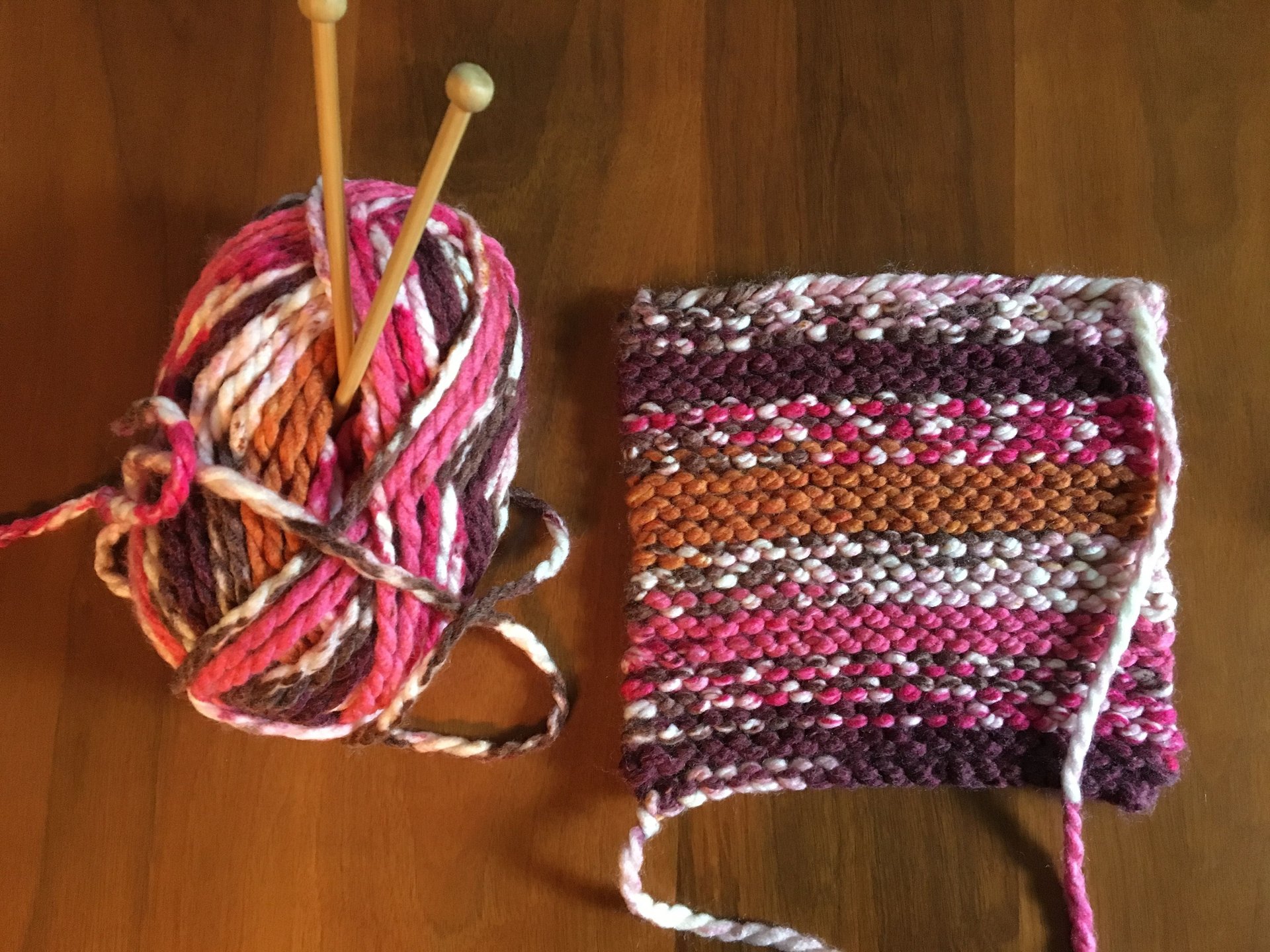Researching my rage has helped me see its power
Subscribe to the Quartzy newsletter to receive this in your inbox each Friday.


Subscribe to the Quartzy newsletter to receive this in your inbox each Friday.
I’m Jessanne, editor of the Quartz Obsession, a daily newsletter that explores all kinds of interesting rabbit holes, such as life coaching or succulents. It’s a celebration of curiosity, and often, a breath of fresh air in a toxic news cycle. (See: sea otters.) I designed it this way on purpose, as someone who needs a daily breather. (Or five.)
A few years ago, my therapist emailed me a diagram of the linguistic spectrum of the word “angry,” from the Oxford English Dictionary. There are 36 entries arranged from top to bottom in order of degree: from livid and choleric through indignant and aggrieved, right on down to displeased.
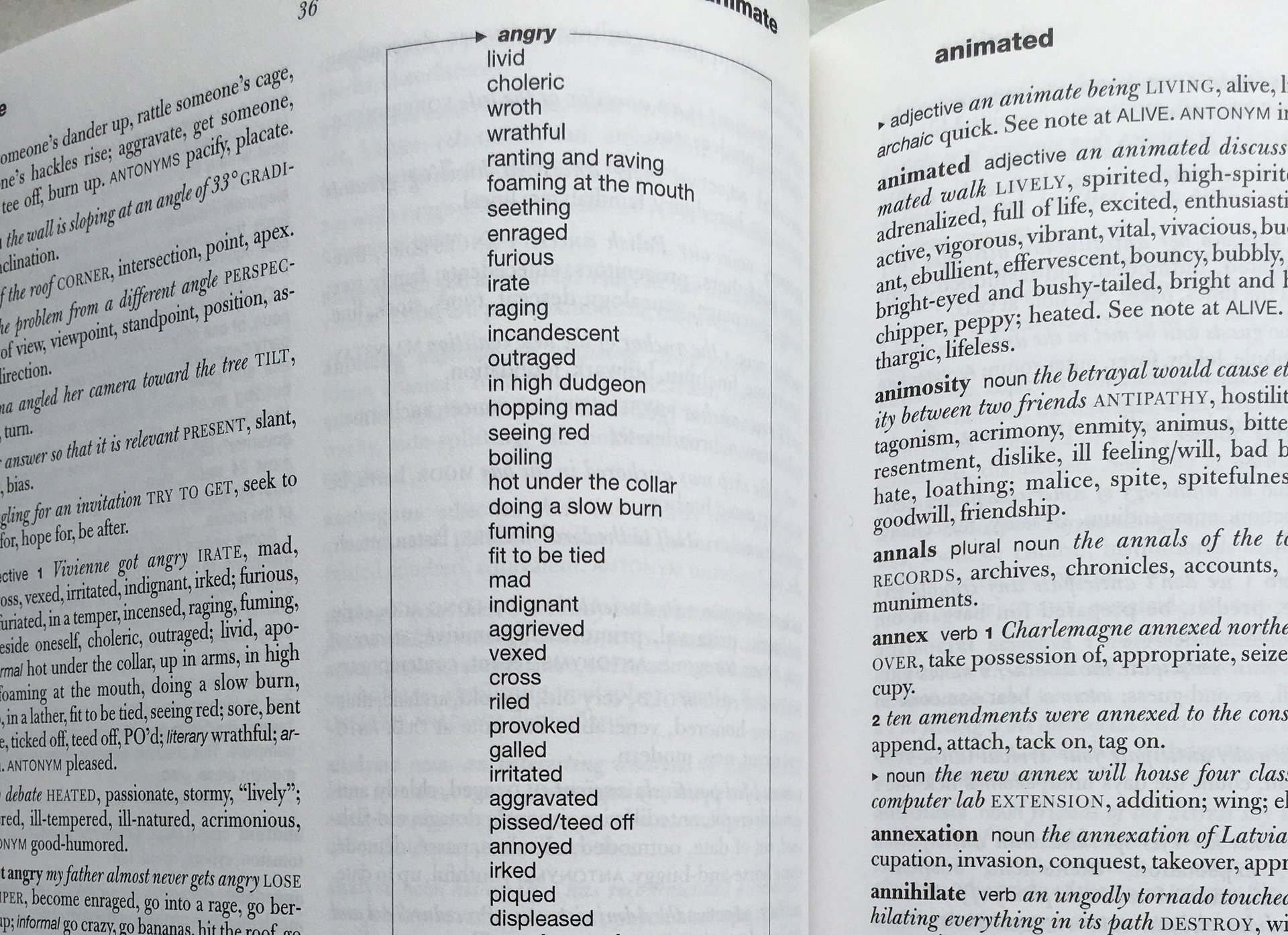
She suggested I study these fine degrees of the emotion. Anger was a feeling that both fueled and foiled my relationships, work, and creative projects—and one that I found completely baffling. I thought about anger as binary; something with an on/off switch. Either I am or I’m not. (And if I am, I probably shouldn’t be.)
I realized that despite being a word-nerd, when it came to my anger I was completely illiterate. It was humbling. And I had work to do.
In recent events, I see a cultural awakening of a similar kind. All over the US, and around the world, women are becoming more intimate with the layers of their anger. We’re becoming more articulate and expressive of it. More studied in the ways it knits together the personal, professional, and political. And more conscious of the immense, historic, paradigm-shifting power of it.
Rage-related reading
This fact has greeted me first thing in the morning lately, thanks to the books stacked on my nightstand:
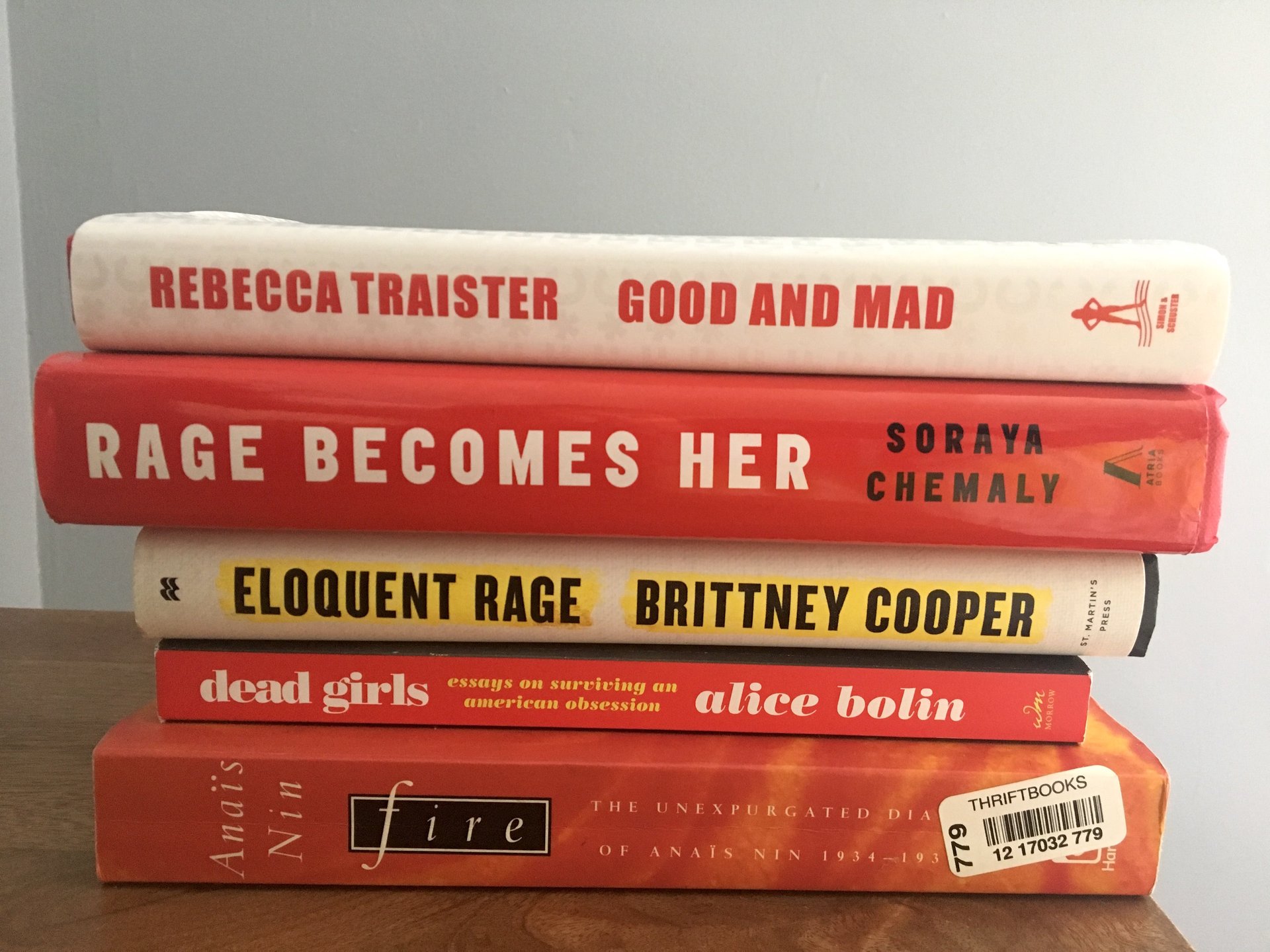
It might not seem like relaxing reading, but I’m finding comfort in feeling not-at-all-alone in this vast emotion right now. I take respite in books, and it seems cosmically significant that a spate of excellent ones about this subject have recently landed.
Rage Becomes Her
In Rage Becomes Her: The Power of Women’s Anger, Soraya Chemaly writes that anger has a profound purpose: its is a moral smoke signal, alerting us to inequality and injustice. (“Anger is loaded with information and energy,” Audre Lorde said in 1981.) And it’s for this very reason that women, in particular, are taught to insulate themselves from it.
“It is hard to overstate how problematic the transfer of anger, as a resource, from girls to boys and women to men is—not only to us as individuals but also to our society,” she writes. “This transfer is critical to maintaining white supremacy and patriarchy. Anger remains the emotion that is least acceptable for girls and women because it is the first line of defense against injustice.”
Today there is much—so much—to be angry about. Chemaly’s book provides a practical imperative and actionable suggestions for reclaiming this powerful emotion through “anger competence.”
For example, don’t say “passionate” when you mean angry. It’s a euphemism used, understandably, “to avoid the dismissal of stereotypes (as an angry black woman, for example, or an ugly and humorless white woman),” Chemaly writes. “However, by not admitting when anger is actually the issue, when it is righteous and justified, we contribute to denying our right to use it effectively and appropriately.”
Eloquent Rage
It strikes me as significant that these books about women’s anger all draw a line to “power” in their subtitles. That the two are intertwined is clear; the specific ways in which one informs the other much less so. That’s part of what makes Brittany Cooper’s narrative in Eloquent Rage: A Black Feminist Discovers Her Superpower so compelling.
“My anger and rage haven’t always been ‘focused with precision’,” she writes. “The process, of both becoming a feminist and becoming okay with rage as a potential feminist superpower, has been messy as hell. We need to embrace our messiness more. We need to embrace the ways we are in process more. Very often Black girls don’t get the opportunity to be in process.”
Good and Mad
Rebecca Traister’s Good and Mad: The Revolutionary Power of Women’s Anger, just out this week, takes a historical longview, examining how women’s rage has fueled political movements over time. In the epilogue, she describes how energized and clear-headed she felt reporting her book, and how she has come to reject the notion that anger itself, rather than its repression, is unhealthy.
So how do we capitalize on this wisdom, and undo the cultural dynamic that undermines the power of women’s emotions?
“We can change it by doing what the world does not do: by acknowledging, paying attention to, respecting, and not shying away from other women’s anger,” Traister writes. “Seek it out, notice it, ask women what makes them angry and then listen to them when they tell you. If part of what they’re angry at is you, take it in, acknowledge how their frustrations might mirror your own, even if they are refracted at you.”
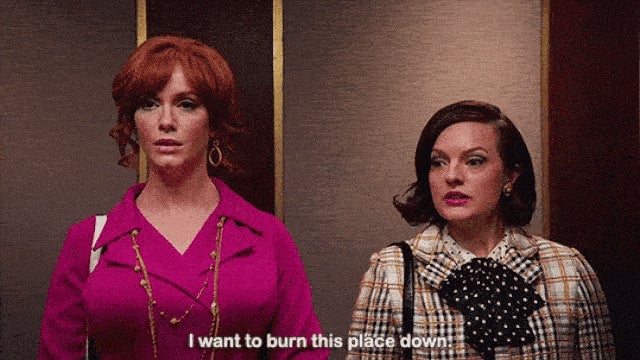
An ancient avatar for female rage
This particular moment of female rage has an avatar: a sculpture by Buenos Aires–based artist Luciano Garbati that reimagines the myth of Medusa, which is pictured at the top of today’s letter.
“The original Greek myth of Medusa offers plenty to be angry about,” Annaliese Griffin wrote this week. Medusa was a human woman until she was raped by Poseidon, turned into a Gorgon as further punishment by Athena, and later beheaded by Perseus.
Garbati grew up in Italy among classic renditions of the snake-haired woman as a monster, and wanted to reimagine her as victor. With this in mind, he created his sculpture in 2008, which lingered in relative obscurity until it went viral after he posted a picture of it on Facebook earlier this year.
Rage is all the rage.
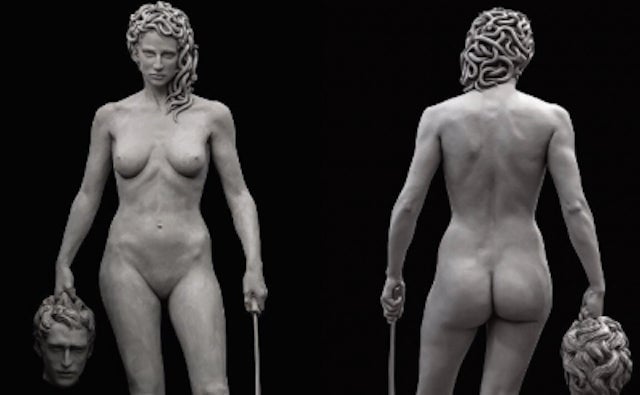
Unwinding with ambition-free knitting
Years ago, I learned to knit from Debbie Stoller’s primer Stitch ‘n Bitch, mostly for an excuse to join a knitting group of the same name. Today, knitting is the one area of my life I’m comfortable being completely without ambition. I care less about the thing I’m making and more about the effort that goes into it—or rather, the lack of effort. The simple action is meditative and keeps the hands busy when, as Edith Zimmerman wrote, they’d just as happily pour another glass of wine or refresh Instagram.
I recently picked up some cheap, chunky multi-colored Isaac Mizrahi yarn at Michael’s and my favorite size 10 bamboo knitting needles. Now I’m spending evenings on the couch knitting simple 20 stitch squares. No purling or patterns. No judging the outcome, even when my uneven stitches show obvious signs of tension after particularly stressful days.
I’m not sure what I’ll do with my knitted squares. Right now they resemble pot-holders, but soon I’ll have enough to stitch into something bigger. Or maybe I’ll just unravel them, and start again.
Have a great weekend!

